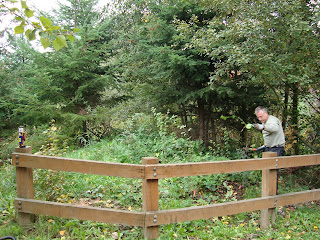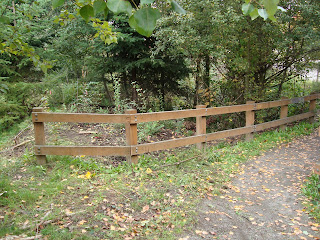Maintenance, maintenance, maintenance
Last week we had work parties out at our Allstar site, which is located about a half mile from our office and is bisected by Longfellow Creek. Volunteers found a newt in the grass and Coho salmon were seen making their way upstream- who knew there could be so much wildlife right next to a parking lot? Other people in rain overalls were spotted and they turned out to be employees from the Department of Fish and Wildlife. Apparently, there have been a significant number of pre-spawn deaths this fall, and Fish and Wildlife will be out watching the Coho until their run ends sometime in December.


If I had to describe the character of invasive plant species in one word, it would be this: tenacious. Most of the plantings at this site survived the heat of summer, but they were buried under a sea of invasives and had to be rescued. Here we also learned the importance of flagging newly planted native species so they can be found months later.
While the usual culprit, Himalayan blackberry, was found in abundance, we also fought against reed canary grass, bindweed, nightshade, Scot’s broom, thistle, and poison hemlock. Perhaps you are wondering, “Poison hemlock… like the kind that killed Socrates?” Yes, the very same. It has carrot-like leaves and can grow to eight feet tall, though we mostly encountered smaller plants. Fortunately, poison hemlock is not poisonous to the touch like some of its look-a-likes and we removed a bunch of it (with gloves on just to be safe).

